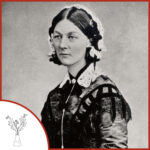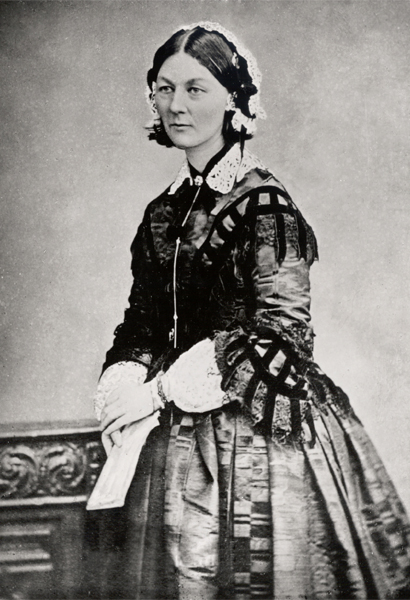

Birth: May 12, 1820
Death: August 13, 1910
Specialty: Statistics and Medicine
Major Contributions:
Use statistical analysis to improve health care
Invented polar-area charts
First female member of the Royal Statistical Society
Wrote multiple books on nursing best practices
The name Florence Nightingale is usually linked with reforms in nursing and health care in general, and while these changes were much needed and their impact is still seen today, it was her use of statistical analysis to push for these reforms that makes her a standout woman in STEM.
While she was a skilled mathematician, she followed what she felt was a calling from God to become a nurse and trained at a hospital in Dusseldorf before she returned to London to become a supervisor at a medical facility.
During the Crimean War reports began coming in about the deplorable conditions that wounded British soldiers were being treated in and she was asked to oversee the introduction of 38 female nurses into military hospitals.
She was one of the first to treat soldiers with respect and this is when she was observed checking on her patients at night earning the title “The Lady with the Lamp.”
Upon returning from the war, she began to investigate the loss of life she had witnessed and using connections provided by her new celebrity status, she asked Queen Victoria to set up a royal commission looking into the health of the army. Working with two leading statisticians, Nightingale was shocked to discover that of the 18,000 deaths during the war, 16,000 were due to preventable diseases and infections NOT due to battle wounds.
Knowing the statistics alone wouldn’t sway people’s thinking, she became the first person to use statistical graphing to call people into action. In 1857 she created a rose diagram which showed that hospitals can kill, but if the right improvements were made in overall sanitation, mass deaths in hospitals could be avoided.
By tracking the deaths before and after implementation of these sanitation standards it could be shown that clean conditions dramatically decreased the death rate with it falling by 99% in one year’s time during the war.
Due to her work, new army medical, sanitary science, and statistics departments were established to improve healthcare, with the standards eventually spreading to the public, changing the face of medicine forever.
Written by Angela Goad
Sources:
Biographies of Women Mathematicians: Florence Nightingale
Florence Nightingale Museum: Florence’s Biography
Wikipedia: Florence Nightingale
iWonder: Florence Nightingale: Saving lives with statistics
The Beauty of Diagrams 4-Florence Nightingale (YouTube)
See Also:
Biographies of Women Mathematicians: Polar-Area Diagram
